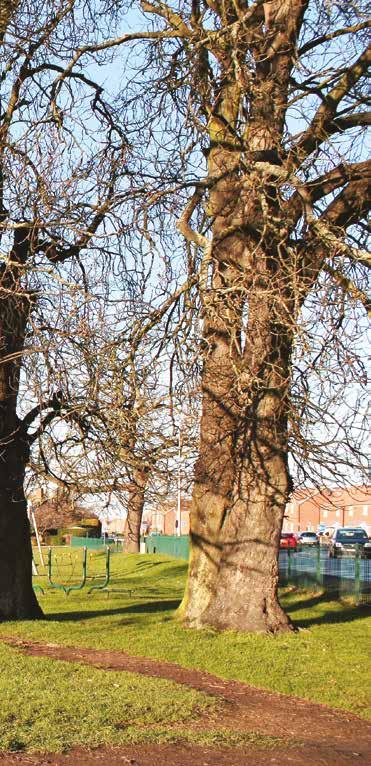
4 minute read
Why John Eve Field?
Why
Field? ‘John Eve’
Advertisement
We uncover the story of how a local landmark got its name.

The name of Eve has been woven into the daily life of the Deepings for over a century; farming a significant acreage in the centre of the settlement, running a local milk round and now the field bearing the name plays a prime role in the social calendar of the community.
But it was not always the case. The family originated in Soham from where James Eve travelled to Newborough as an agricultural labourer and there in 1839 married Sarah Clark with whom he had five children brought up in Milking Nook. The second of the brood, John, born in 1843, married Ann Wildboar and became a relatively prosperous potato dealer, building his own house in Guntons Road and farming 20 acres. John’s second son Herbert remained at home working on the farm until in 1903, aged 27, he married Charlotte Venters from Eye.
It was then that the couple moved to Deeping to Swines Meadow Farm, which is still in the family and run as a garden centre. Herbert and Charlotte had six children; one, Mollie died an infant. The youngest, Horace born in 1918, saw service in the Second World War, firstly as a mechanic and latterly as a chauffeur. He was the only son not to go into farming, instead after his marriage running a restaurant on the seafront at Skegness.
When her son John married Frances, Charlotte, widowed in 1926, bought him Hall Farm while son, Herbert Leonard, known as Len, farmed with his son Michael at Swines Meadow. They reared a pure breed herd of saddleback pigs, numbering 200 head of breeding sows. When saddlebacks became less popular, thought to be too fatty,

they were bred with Welsh or Large White. Len and Michael were assisted by Albert Eric, known as Eric, (twin to John) who lived in Queensland, Halfleet, with his mother, Charlotte.
John focused on rearing a herd of British Friesians; all were tuberculosis tested and those not making the grade were sent for slaughter. John’s herd of 200 Friesians were often successful at agricultural shows, their rosettes still kept proudly by the family today. John was kept busy tending the herd, milking and delivering milk house to house, at first with a pony pulling a cart carrying a churn from which buckets were filled with the rich creamy milk.
John used a little black pony for the job, treated to a daily bowl of beer as she finished the round by an old chap who resided in a cottage on Towngate opposite Vergettes farm. Later, Dolly, a brown-and-white pony, took over for about 15 years and then went out to grass. When Dolly retired a bigger milk float was used that was more suitable for distributing the milk bottles which were now popular, kept in crates. A big brown pony pulled the float, better suited in size to the larger vehicle. The calm of the pony trotting down the High Street was shattered one morning when a lorry had a tyre burst, crashing into Grummits TV shop window (later Deeping TV ). The pony found herself in the wrong place at the wrong time, and galloped home to her stable at Hall Farm dragging her shafts behind! Michael, nephew of John, explains, “As traffic built up in the area and it was harder and harder to get staff, and the farm suffered from the effects of Foot and Mouth disease elsewhere, John sold his milk to Horrels, later Beeby’s, and he also began to sell his land. At one time the family farmed 700 acres locally. First it went for the building of Black Prince Avenue and John Eve Way, and land was donated to Market Deeping Parish Council (now Town Council) for the growing population, to provide the playing field. Later land was sold for the Health Centre, John paying for the building of the nurses’ consulting rooms.”
l-r, Len, Alan and John Eve with prize winning British Friesians

John Eve had been a Councillor for the best part of 30 years and he knew well that with the selling off of the Park, the area now known as Wade Park Avenue, there was a desperate need for a recreation ground. John died in 1985 and his legacy remains as important now as it was in the days when he first conceived of the idea of a playing field in the lee of the church.
With thanks to Michael Eve, Pauline Redshaw and Joy & Ian Baxter








